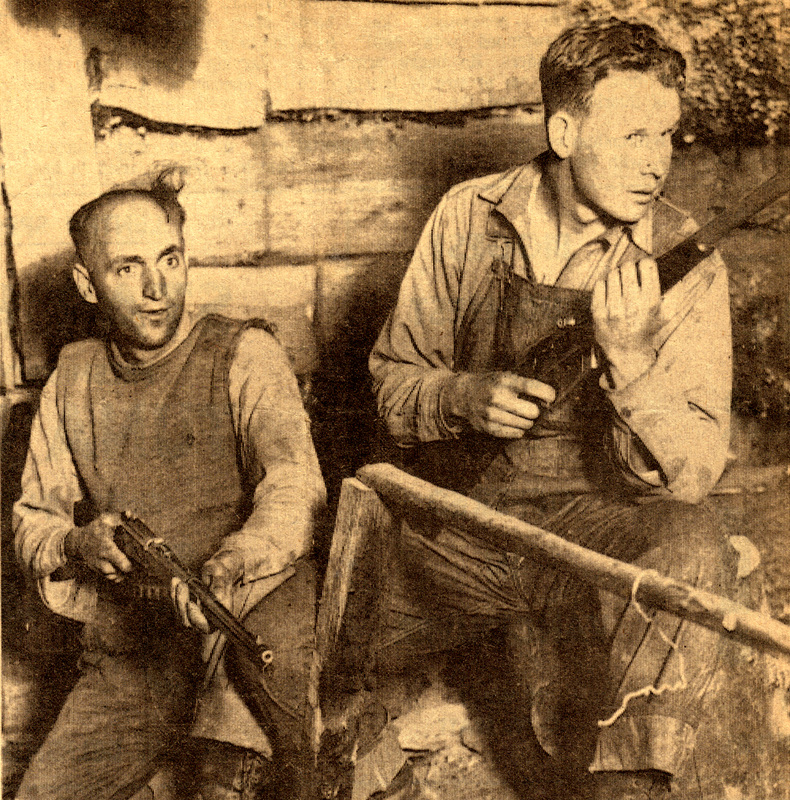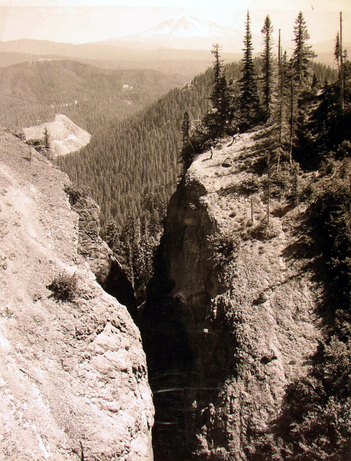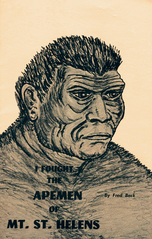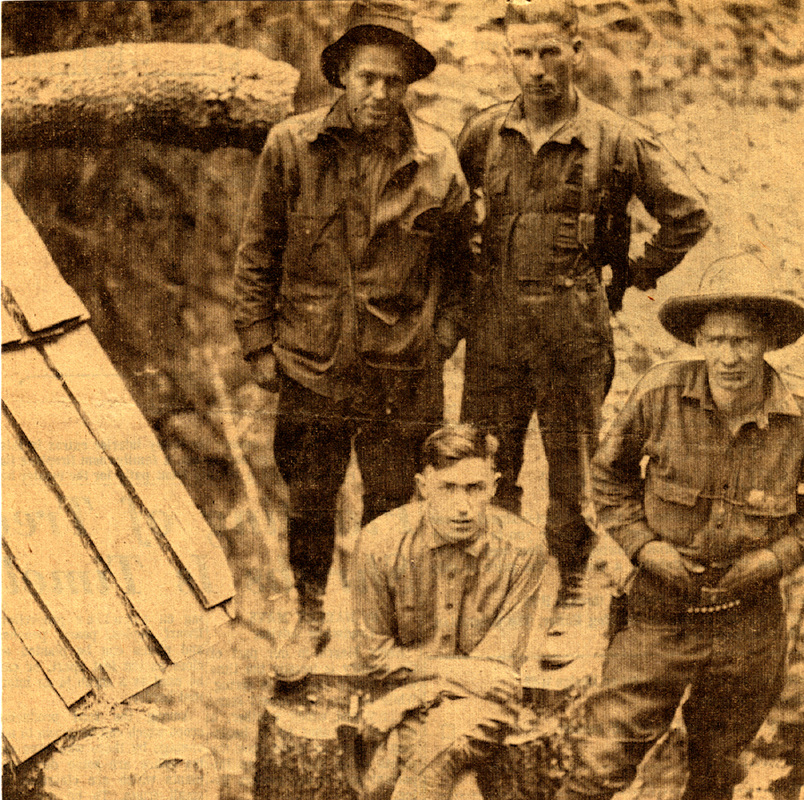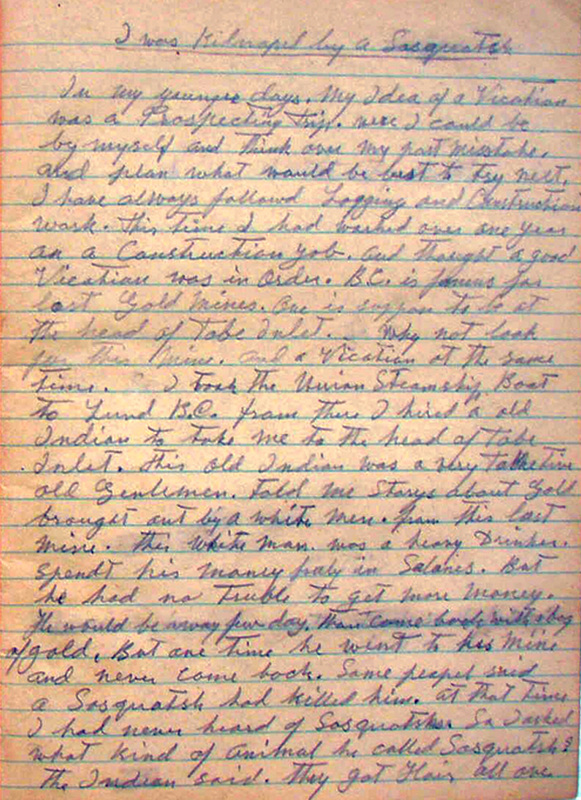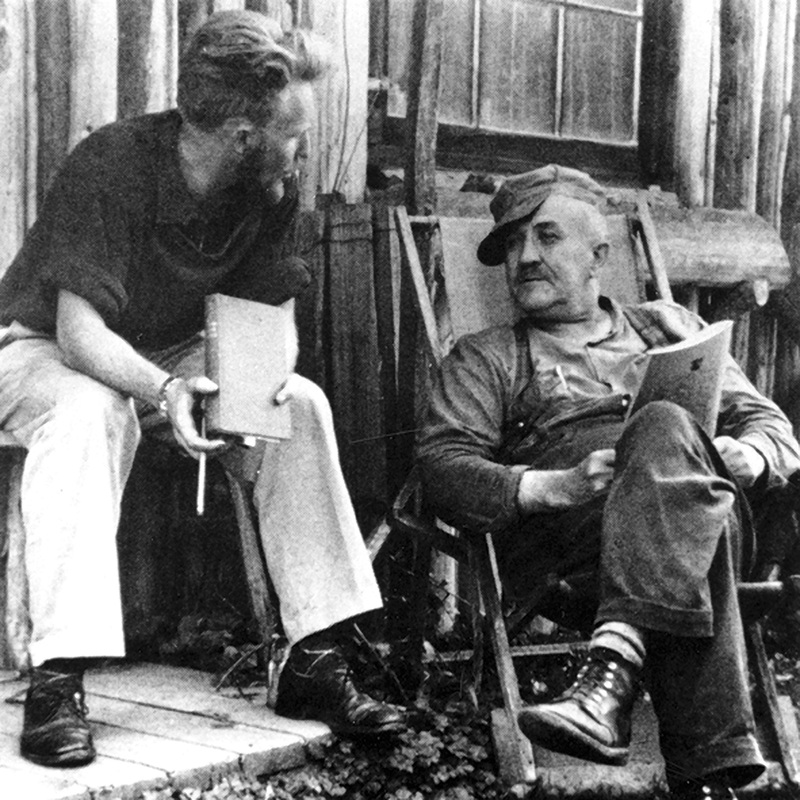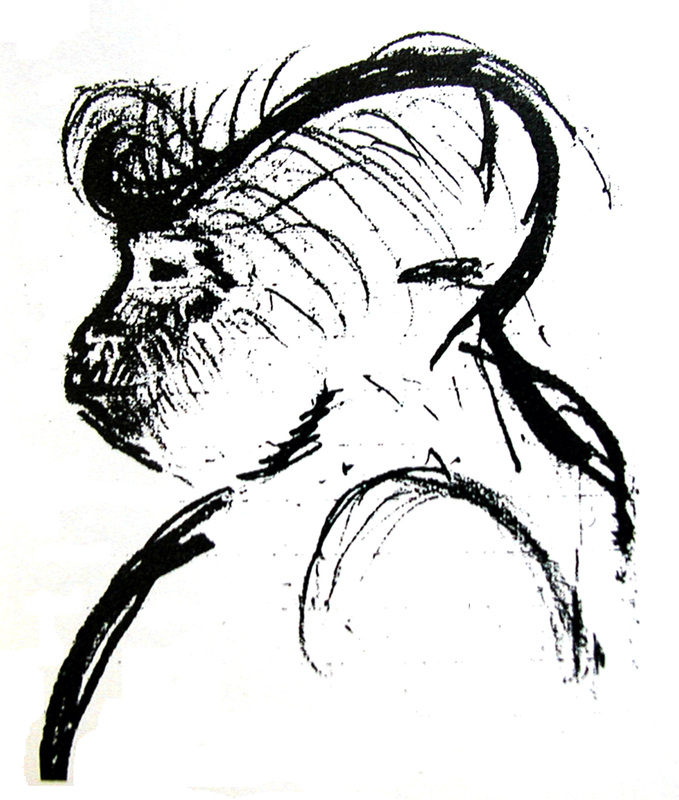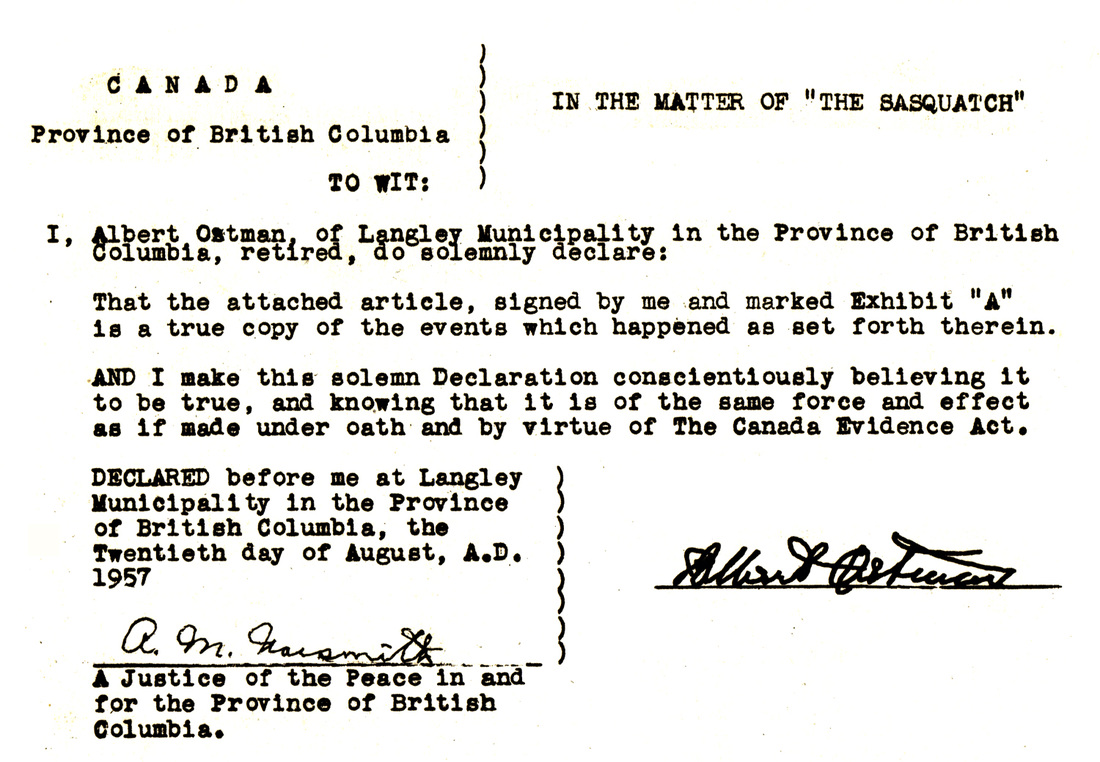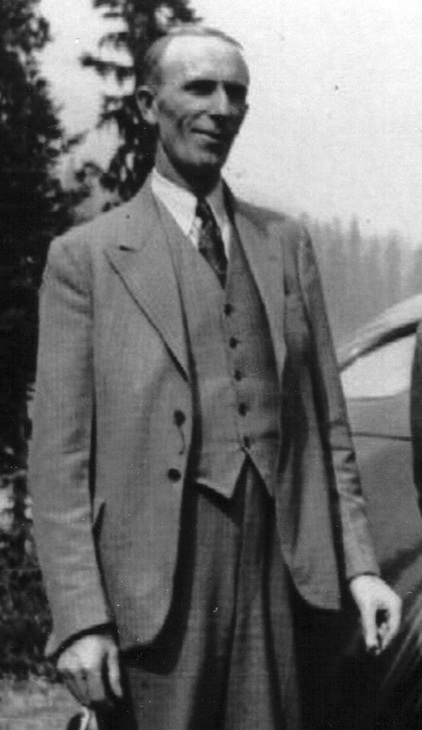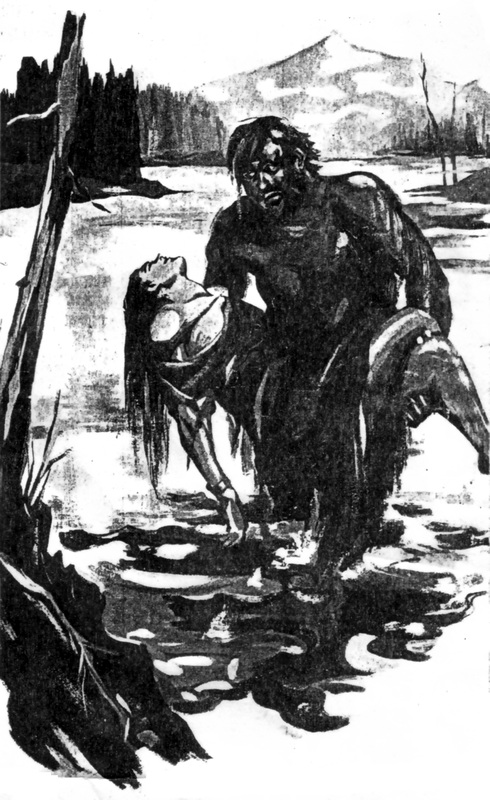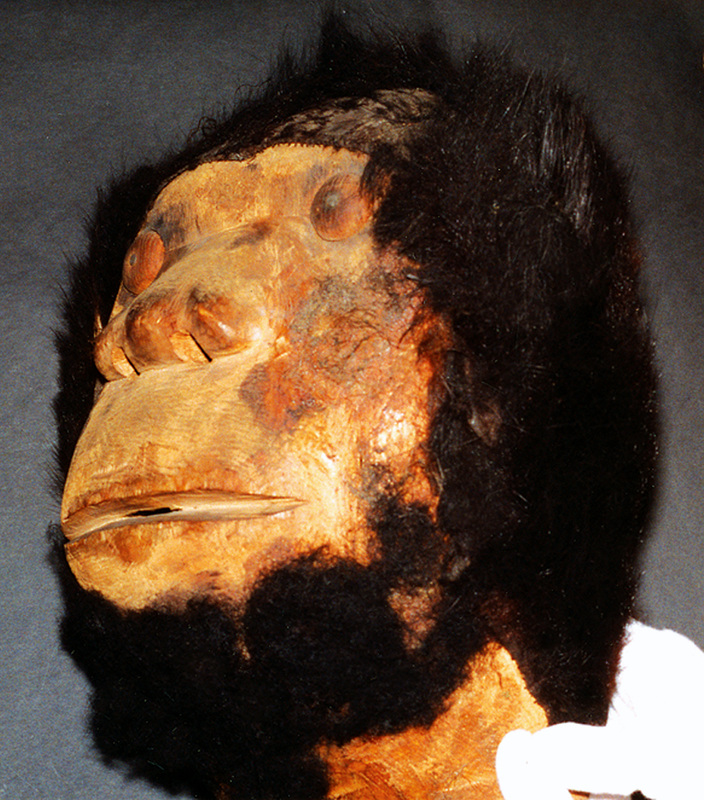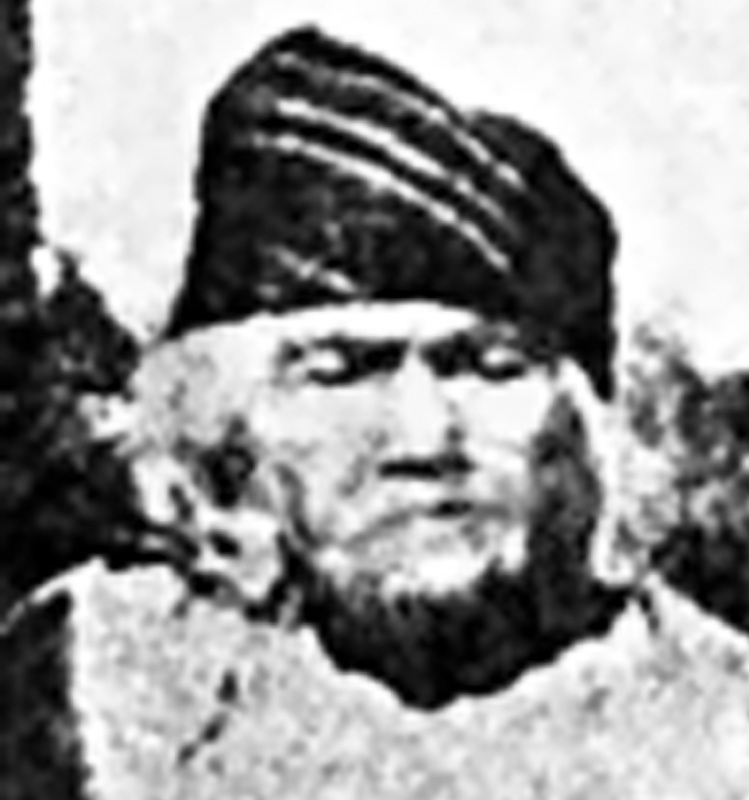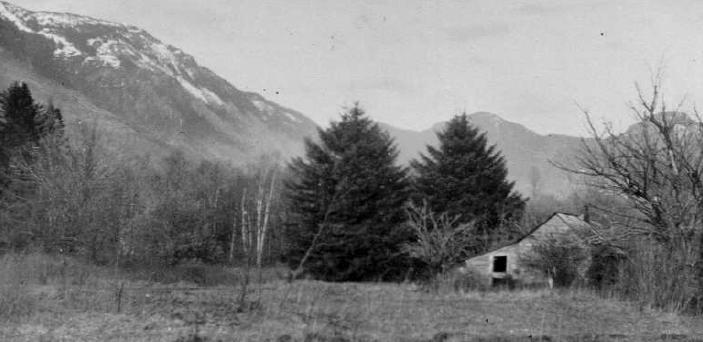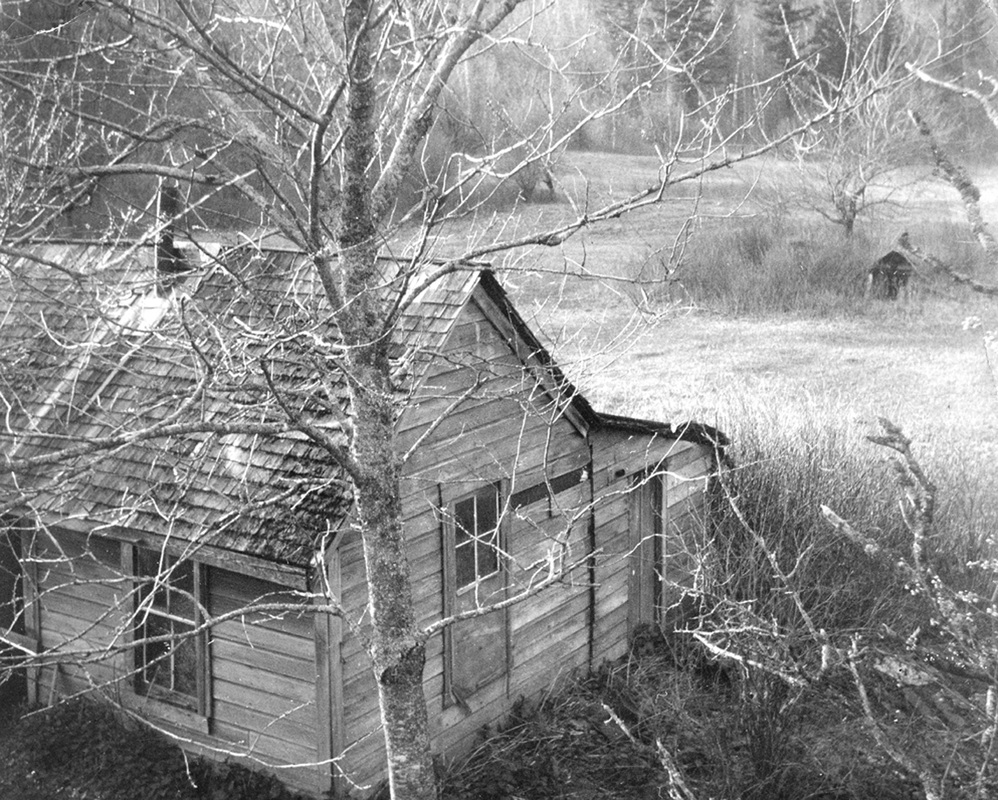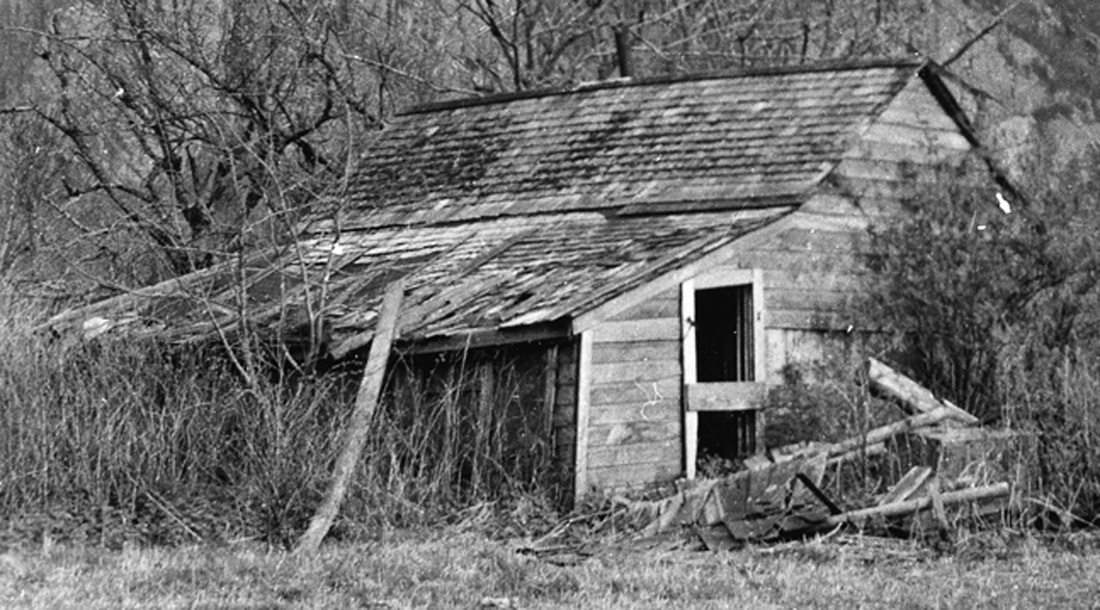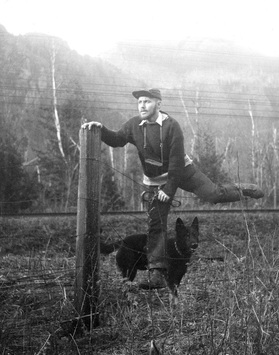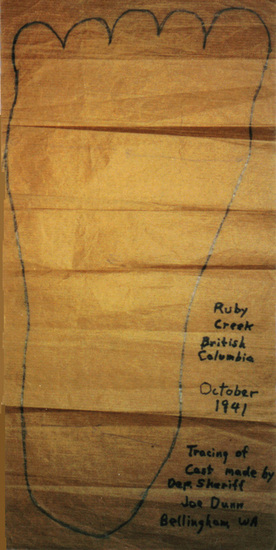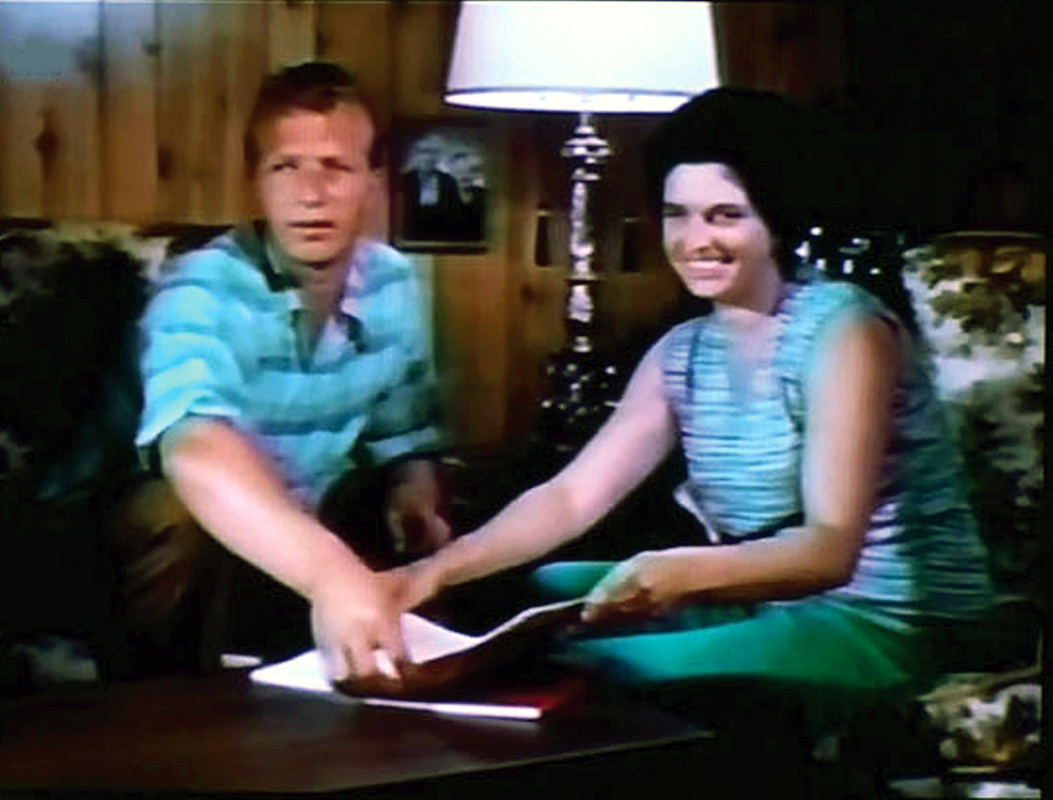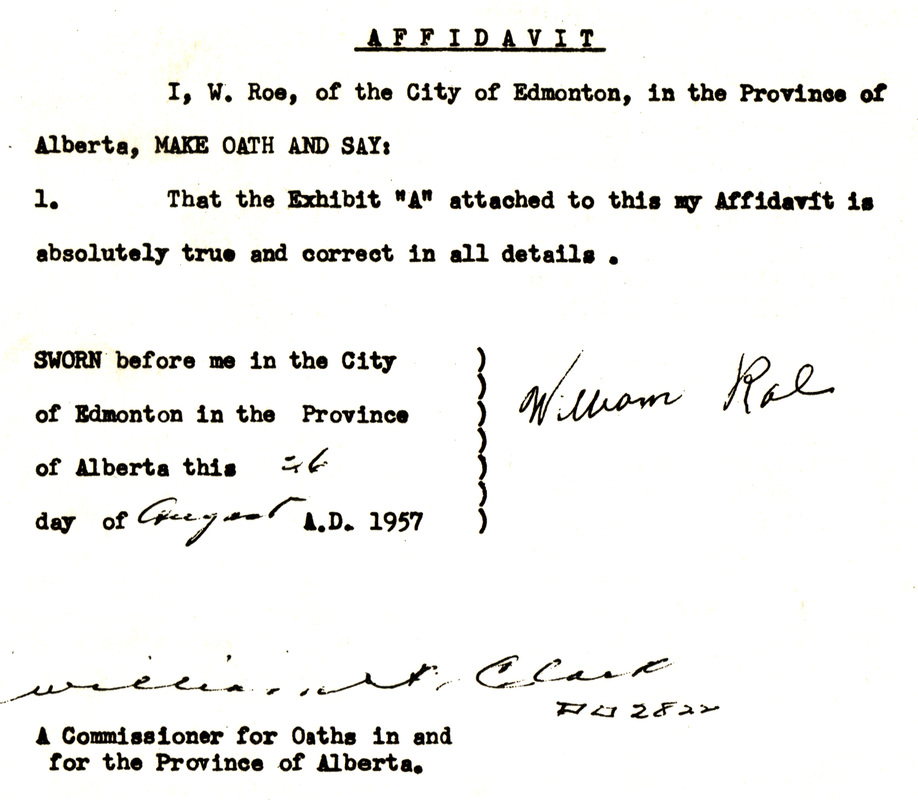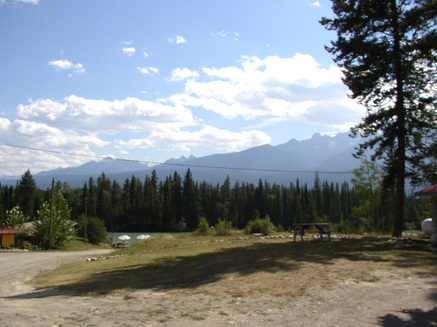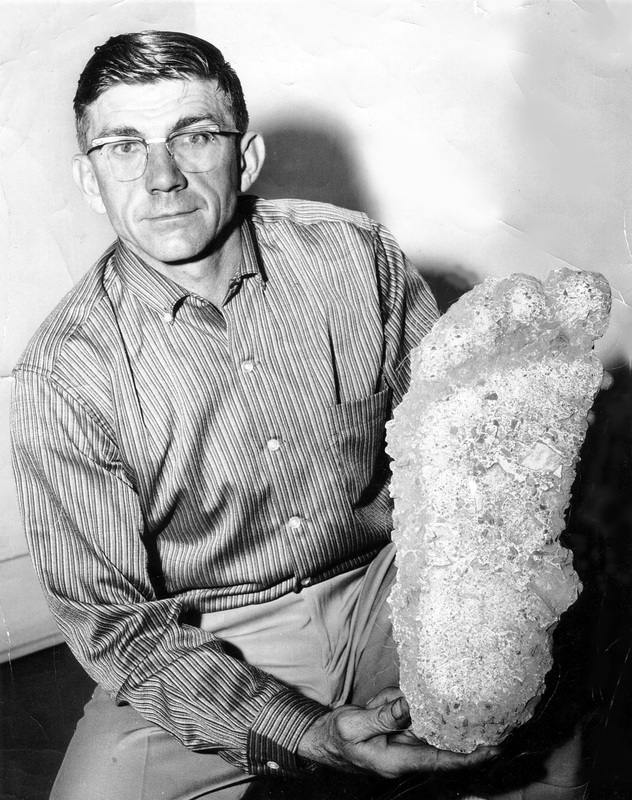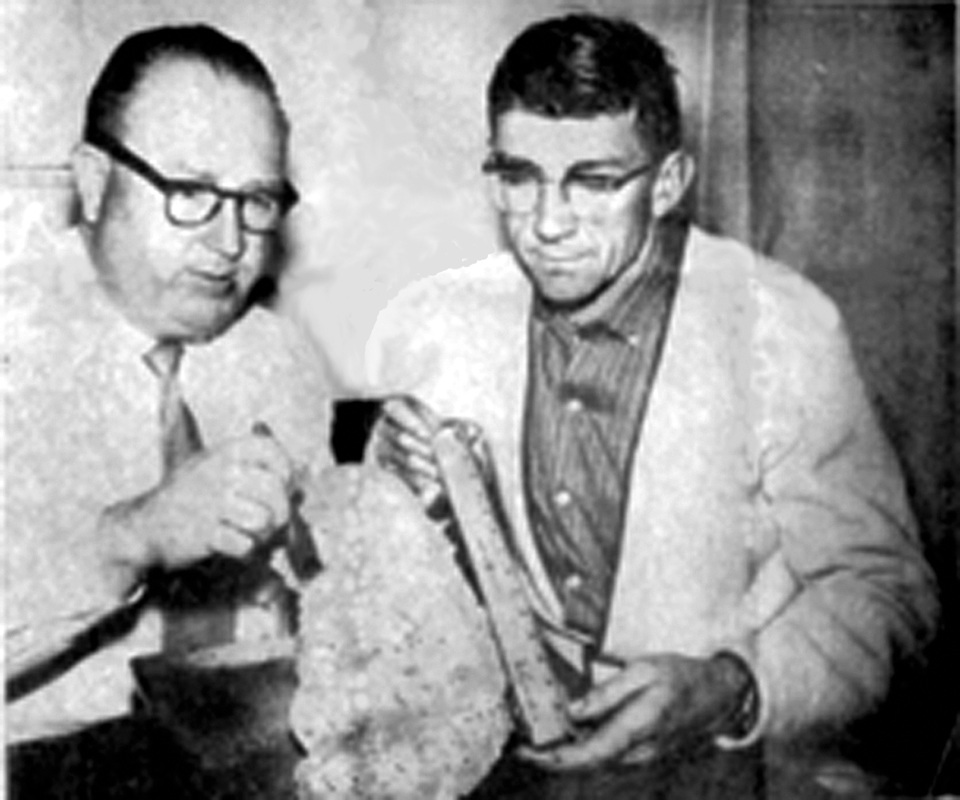The Sasquatch “Classics” Gallery
|
Fred Beck and three other miners alleged they were attacked by “apemen” at their mine claim on Mt. St. Helens in 1924. The creatures pelted the miners’ cabin with rocks, climbed on the roof, and tried to break through the door. The attack lasted all night.
Previously, the men had seen unusual large footprints in the area, and Beck, with another man, had shot at an odd creatures they saw at about 100 yards, and then at 200 yards, taking a total of six shots. It appears the attack on the miners was likely in revenge -- possibly one of the shots had found its mark. When the men emerged from the cabin in the morning, Beck saw one of the creatures at about 80 yards away near the edge of what is now Ape Canyon. He took a shot and and the creature toppled into the canyon. The group hastily left the area. Beck and one of the men, Roy Smith later returned with newspaper people and investigators. The photograph seen here shows Beck (left) and Smith re-enacting the scene for a newspaper reporter. |
|
Ape Canyon -- photo taken in about the 1960s. The incident resulted in the name of the canyon.
|
Newspaper photo showing the investigators standing by the besieged cabin. From left to right: Burt Hammerstrom, free-lance writer; Bill Welch, forest guard at the Spirit Lake Ranger Station; Frank (Slim) Lynch, Seattle newsman; and Jim Huffman, forest ranger for the Spirit Lake district. Footprints were found, but photographs have not come to light if they were taken.
|
|
Rene Dahinden (left) interviewing Albert Ostman in the late 1950s. Ostman is holding the scribbler in which he wrote his story.
|
Albert Ostman claimed that while prospecting at the head of Toba Inlet, BC, in 1924 he was kidnapped by a sasquatch and spent six days in captivity with a sasquatch family --man, woman, and two children. After making his escape, he kept his story close until 1957 when he contacted John Green who was doing sasquatch research and had published articles in this connection. Ostman had hand-written his entire story in a scribbler as seen here. He provides a highly detailed account of his experience, with full descriptions of the creatures and how they lived. Albert Ostman’s sworn statement that his story was true. John Green arranged to have the statement taken.
|
|
John W. Burns (d. 1962) was a teacher on the Chehalis First Nations Band reservation. He was likely the first “true” sasquatch researcher. He researched Native stories of the creature and effectively coined the word “sasquatch.” He wrote at least two major articles on the sasquatch, one in 1929 and the other in 1954. The first appeared in "MacLean’s Magazine", a highly popular publication founded in 1905. The second in Liberty magazine (but not the famous magazine of this name which ceased publication in 1950). His articles contain fascinating stories of the sasquatch, the most noteworthy being the abduction by a sasquatch of Serephine Long (actual last name probably “Leon”) in about 1871. Although one of the incidents he wrote about (that concerning Alexander Caulfield) we now know was fiction, and that some of the facts he presents really don’t make a lot of sense, most of what he said could indeed be true.
|
|
Serephine Long in 1941 at about age 87. Burns started teaching at Chehalis in 1925, so likely knew Serephine fairly well. One of the most noted sasquatch-related artifacts is this sasquatch maske created by Ambrose Point, a Chehalis Native, in 1938. John Burns obtained it and donated it to the Vancouver Museum, BC, in 1939. The nature of the mask implies it was inspired by an actual sasquatch sighting. |
|
A major sasquatch sighting incident took place on this property in 1941. The photographs seen here show the house after it had been abandoned for about 15 years.
|
|
The William Roe Experience
In 1955 William Roe, a highway construction worker, alleged he saw a very unusual creature while hiking Mica Mountain in British Columbia. He was able to observe the oddity for a considerable time and noticed a lot of details which he later recorded. A drawing of the creature he saw is shown on the left. It was was created at the request of John Green by Myrtle Roe, William's daughter, under her father's direction. A full account is provided in "More Info." |
|
A sloping mountain seen in the background to the right in this photograph is Mica Mountain. I doubt that it has changed in any way since 1955. |
This drawing was created by Myrtle Roe, under the direction of her father, William Roe, who saw the creature on Mica Mountain, BC, in 1955.
An affidavit sworn and signed by William Roe as to the truth of his written account of the incident. In Canada, such instruments were, and still are, taken very seriously.
Myrtle Walton (nee Roe) is seen here with her husband. They are discussing her father's sighting and the drawing she created. |
|
Gerald (Jerry) Crew, a road construction
employee, working in the Bluff Creek region, California, was the first to make a plaster cast of what is believed to be a sasquatch footprint (one of several) and take it to a newspaper (probably October 4, 1958). On October 5, 1958 an article appeared that referred (in the heading) to whatever made the footprint as, “Friendly Bluff Creek Giant,” and then in the article it is stated that the prints Crew discovered were made by “Big Foot.” (in quotations)--a simple and natural (but silly) way to describe what made the prints. The Associated Press picked-up on the absurdity and used the word “Bigfoot" (one word) to get attention stating, “New Sasquatch found --it’s called Bigfoot.” Naturally, once the word was blasted across the nation, there was no turning back--Bigfoot became the creature’s US name. Nevertheless, the word had previously been used by people in the region when they observed footprints of the nature Crew discovered. I don’t think Crew used the term “Bigfoot,” although he was likely aware of it. Crew is seen here (top) in one of the photos taken for newspaper articles. The first photo published of him with a footprint cast is shown below. He is seen with Andrew Genzoli, regional editor of the the Humboldt Times, the newspaper Crew visited (the photo was published October 5, 1958). Unfortunately, the word has done a lot of harm. It is almost synonymous with the word “hoax” and by its very nature results in two absurd words as its plural, “Bigfeet” and “Bigfoots.” Let’s face it, the word invites ridicule because it's a silly, childish word. |
Gallery Navigation
All images in this presentation are from the Murphy/Hancock Photo Library or other restricted sources and are under copyright where applicable.
Please contact <[email protected]> for details on usage.
Please contact <[email protected]> for details on usage.


